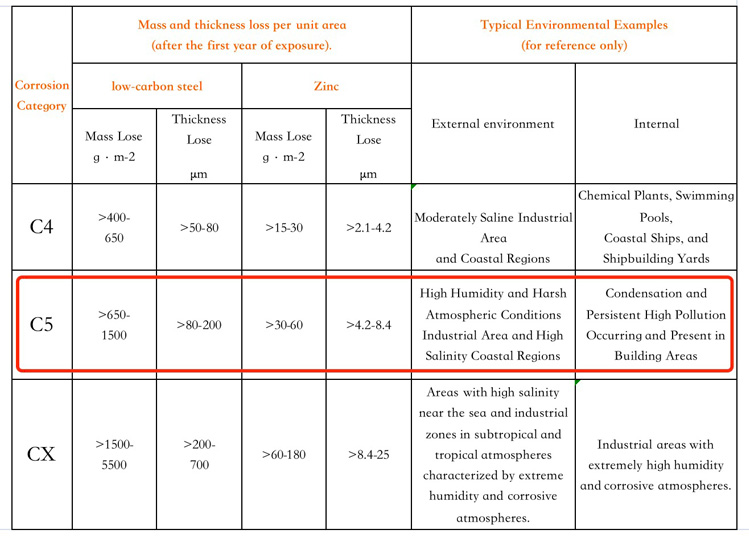What Are You Looking For?
How do you correctly choose a coating system for your valves? With the extensive content of ISO 12944, how can you determine which environment your product falls into among C2, C2, C3, C4, C5, CX, lm1, lm2, lm3, lm4? Users mention that the coating's service life must reach 15 years—how do GEKO control valves prove this, and so on? To address these questions, GEKO control valves have summarized them into the ISO 12944 4S method for reference.
The 4S method is as follows:
Step 1: Confirm the corrosion category (ISO 12944-2).
Step 2: Confirm the durability of the protective coating (ISO 12944-1).
Step 3: Select the coating system required for the project (ISO 12944-5).
Step 4: Coating system laboratory validation (ISO 12944-6, optional).
Detailed description is as follows:
1) Confirming Corrosion Category (ISO 12944-2)
The atmospheric environment is divided into six atmospheric corrosion categories:
C1: Very low corrosion (Very low)
C2: Low corrosion (Low)
C3: Medium corrosion (Medium)
C4: High corrosion (High)
C5: Very high corrosion (Very High)
CX: Extreme corrosion (Extreme)
Immersed in water or buried in the soil is divided into 4 categories:
Im1: Freshwater
Im2: Seawater or slightly brackish water without cathodic protection
Im3: Soil
Im4: Seawater or slightly brackish water with cathodic protection
2)Confirming the durability of protective valve coatings (ISO 12944-1)
The standard specifies four different durability ranges:
Low (L): Not exceeding 7 years
Medium (M): 7-15 years
High (H): 15-25 years
Very high (VH): >25 years
The durability of protective valve coatings is not a "guarantee period." The guarantee period is usually shorter than the durability, and there are no rules specifying the relationship between these two times. The "environmental type" and the "durability of the coating system" are the main parameters for selecting a coating system and must be given attention.
3)Selecting the Coating System Required for the valve Project (ISO 12944-5 or ISO 12944-9 in CX Environment)
Based on the substrate, choose the minimum recommended coating system as per the standard. The coating systems in the standard are determined based on field application experience and laboratory performance test results according to ISO 12944-6. They provide valuable references. An example is the C2 table as shown below:

Points to Note:
1.The listed systems have been proven effective in practice, but it's not possible to list all coating categories. Other similar systems may also be feasible.
2.Under a given substrate type, coating performance can vary significantly depending on the specific composition of the coating. The substrate types described in Chapter 6 are just examples, and other types of valve coatings can also be used.
3.New technologies are constantly evolving and are often influenced by government regulations. Technologies proven effective through the following methods are acceptable:
a) After the application of these new technologies, tracking and recording verify their effectiveness.
b) Laboratory test results meet at least the requirements of ISO 12944-6 and ISO 12944-9.
4. Valve Coating System Laboratory Validation (ISO 12944-6) or Pre-Certification of Coating Systems (ISO 12944-9)
In accordance with the standards, select a coating system. If the owner requires laboratory testing, the coating system must undergo laboratory testing, primarily based on ISO 12944-6 or ISO 12944-9. If your coating is a new technology, laboratory validation is necessary.
Step 1: Confirm the corrosion category (ISO 12944-2)
In this case, the valve project is located in a coastal industrial area, typically associated with energy, petroleum, and chemical industries. The environment is characterized by high humidity, high salinity, and high corrosion. Therefore, the selected environmental type based on the table is C5.

Step 2: Confirming the durability of protective valve coatings for project (ISO 12944-1)
The design service life is 20 years. According to the table, the selected range is 15 years to 25 years, so the durability choice is "High" (in practice, the durability of many valve coatings may also consider the construction cycle, typically assumed to be around 2 years).

Step 3: Select the coating system required for the valve project (ISO 12944-5)
The substrate of the sample is carbon steel, the environment is C5, and the durability is "High." Therefore, GEKO control valves choose to refer to Table B.1 and B.2 in Appendix C of ISO 12944-5, selecting coating systems for carbon steel under corrosion category C5. Specifically, ISO 12944-5/C5.03 or ISO 12944-5/C5.07 may be suitable.

Step 4: Coating System Laboratory Validation (ISO 12944-6, optional)
Conduct experimental tests to validate the selected coating system. This step may not be necessary if the user agrees to use the system recommended by the standard. However, if there is a desire to reduce potential disputes in the contract, testing confirmation can be performed before signing or periodic inspections can be conducted during the mid-project phase to ensure project quality.
According to ISO 12944-6, the testing items for C5-H are as follows:

After testing three panels, two of them meet the standard requirements, and it is deemed as compliant.
If you are looking for a reliable control valve ( Liquid, gas, powder) supplier for your project, please don’t hesitate to contact us: info@geko-union.com!
